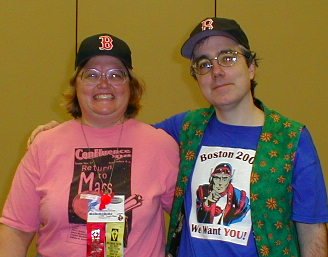Fantastic Four: Rise of the Silver Surfer
For years, Marvel Comics’ Fantastic Four boasted that it was the “World’s Greatest Comic.” And for a while, in the 1960s, the book lived up to that boast. Featuring complex (for comics, at least) plots, engaging characters (who didn’t like the Thing), interesting story lines, backstories that were carried on for many books (at a time when this was unusual), and an interesting science fictional universe, it was certainly the book I most looked forward to every month. And one of the high points of comics in the 1960s was Fantastic Four issues 48-50, which introduced the characters of the world-devouring Galactus and his herald, the Silver Surfer. It captured much of what was so enjoyable in the comic of the time. For at least several years after that, Fantastic Four remained at the top of the comics world, until sometime in the early to mid-1970s, when much of the Marvel Universe – other than their reborn X-Men – were getting a bit tired. But I still look back at the FF of the 1960s with great fondness.
I thus really wanted to like the first Fantastic Four film. I tried to not fall in the overly fan-boyish trap of complaining about how it differed from the comics – but damn it, the changes they made to the character of Dr. Doom were not for the better. Despite that, though, I really tried to like it. And I did like some parts. It wasn’t awful, but it wasn’t very good. Still, hope springs eternal, and the trailer for the second film seemed to promise that it would be better than the first. And perhaps it was … but not by much.
My daughter and I went to see the film together, and both left wondering how a film that’s slightly under 90 minutes long can seem much longer. The answer, I think, is that so many different things are crammed into the film, often in haphazard fashion, that we know a lot has happened. We have the Surfer coming to earth. We have Reed and Sue’s wedding. And the Torch being infected with some cosmic radiation by his encounter with the Surfer in such a way that he exchanges powers with whatever other FF member he touches. And Dr. Doom’s attempts to steal the Surfer’s powers. We thus have the plots of three different Marvel comics storylines of the 1960s, plus more beside, all crammed together in a note very convincing manner.
The film does have one good sequence: when the quarter saves the people trapped on the collapsing London Eye, after the Surfer has visited
As the film approaches its end, the Surfer is convinced to turn against Galactus by Sue Storm (a role given to Alicia in the original comic). At this point, I looked at my watch and saw that there was less than five minutes left. Good, I thought to myself. Despite everything, they really are going to be like the comic and end with Galactus’s arrival on Earth – a cliffhanger and lead-in to the next film. But, no. In the final five minutes, Galactus arrives. What a disappointment. Instead of the familiar super-advanced humanoid giant of the comics, we get something that looks like a cross between a cosmic storm and a planet. The Surfer the flies into Galactus, discharges his power, and destroys Galactus. This doesn’t make sense on so many levels. The Surfer had told Sue that he served to preserve his own planet. But if he had the power to destroy Galactus, why didn’t he do it many years earlier. It’s all very annoying, and all very much of a major let down.
Moreover, in the midst of all this running around and jumbled plots, we never get any real character development. Reed (played by Ioan Gruffudd, who did such a great job in Amazing Grace and the Hornblower series) is rather flat, though perhaps the best developed of the group. He’s certainly played by the best actor of the four. Sue Storm comes off as whiny and self-centered in the first half of the film (her fancy wedding more important to her than finding out why the world may be coming to an end). Johnny remains an egocentric kid; I had hoped he would have grown up more. And the Thing – one of Stan Lee’s best characters, and the reason why the Fantastic Four was so popular for so long – remains more of a joke than anything. Finally, Dr. Doom remains a puzzle. Julian McMahon is completely miscast for the role. If nothing else, Doom needs a deep, sonorous voice, something McMahon can’t manage.
In the end, it’s a movie of many parts, most of them so-so. The X-Men franchise proved that you can make a good superhero movie centered on a superhero team. But for that to happen with the Fantastic Four, they need better writers and directors.


0 Comments:
Post a Comment
<< Home